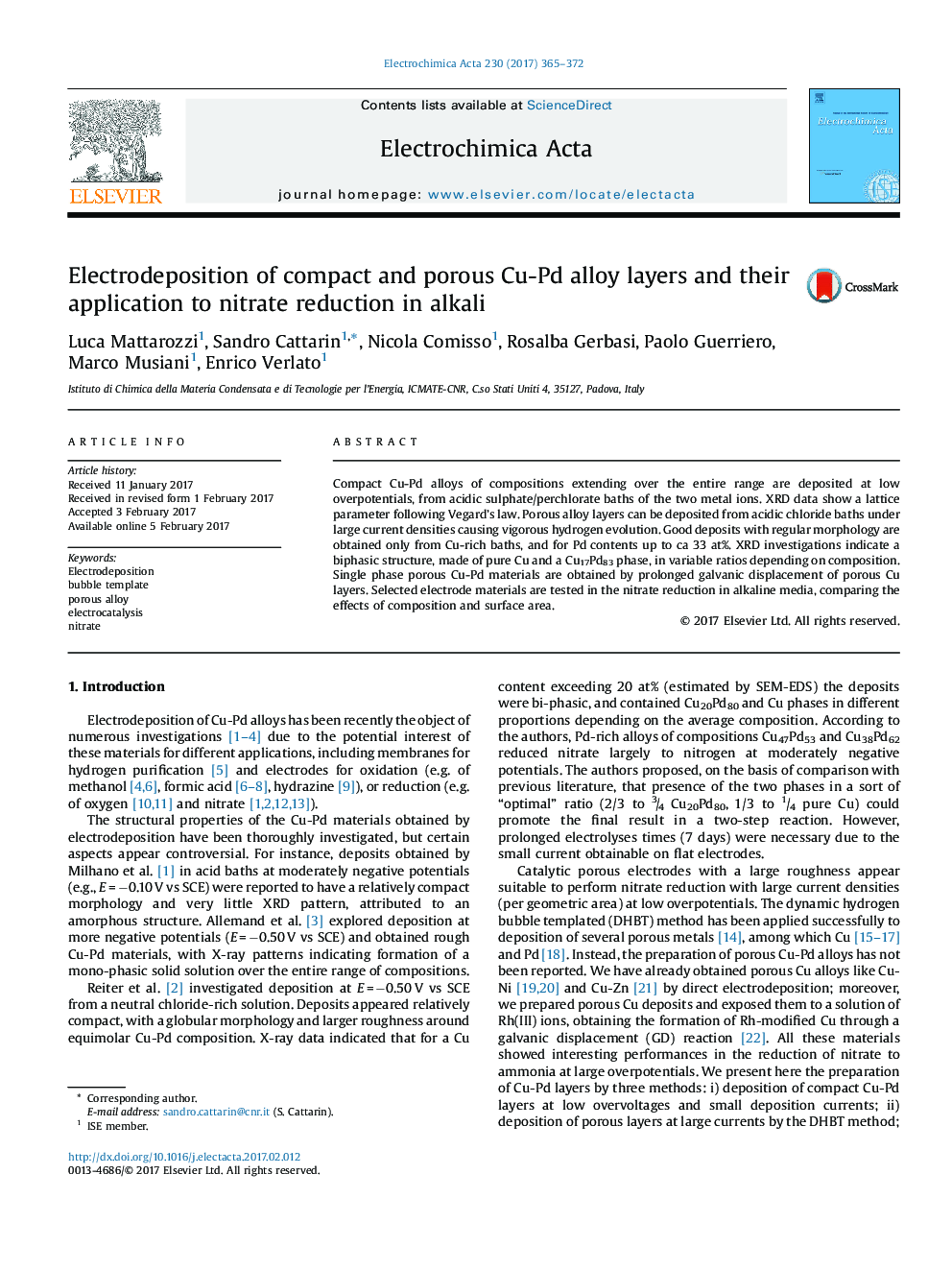| Article ID | Journal | Published Year | Pages | File Type |
|---|---|---|---|---|
| 6471404 | Electrochimica Acta | 2017 | 8 Pages |
â¢Deposition of a porous Cu-Pd layer is obtained from a simple stable chloride bath.â¢The structures of compact and porous Cu-Pd alloys are investigated and discussed.â¢Nitrate reduction rates at low overpotentials are much enhanced at porous materials.
Compact Cu-Pd alloys of compositions extending over the entire range are deposited at low overpotentials, from acidic sulphate/perchlorate baths of the two metal ions. XRD data show a lattice parameter following Vegard's law. Porous alloy layers can be deposited from acidic chloride baths under large current densities causing vigorous hydrogen evolution. Good deposits with regular morphology are obtained only from Cu-rich baths, and for Pd contents up to ca 33 at%. XRD investigations indicate a biphasic structure, made of pure Cu and a Cu17Pd83 phase, in variable ratios depending on composition. Single phase porous Cu-Pd materials are obtained by prolonged galvanic displacement of porous Cu layers. Selected electrode materials are tested in the nitrate reduction in alkaline media, comparing the effects of composition and surface area.
Graphical abstractDownload high-res image (167KB)Download full-size image
